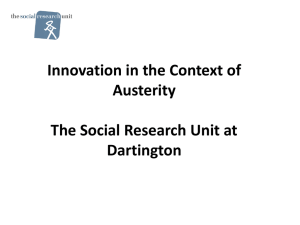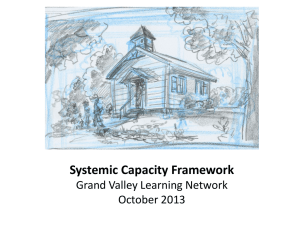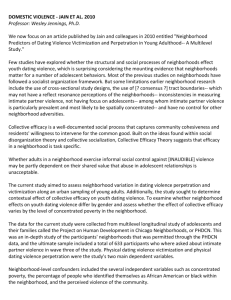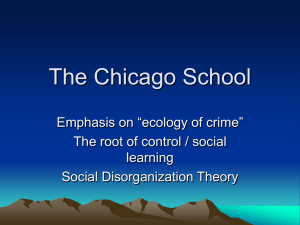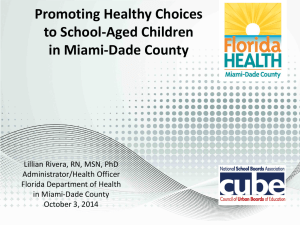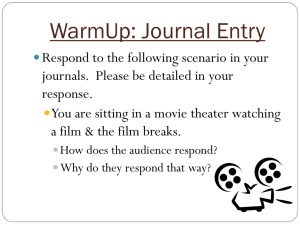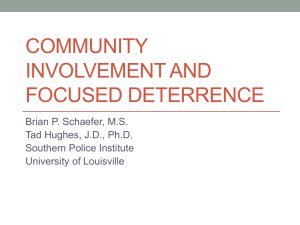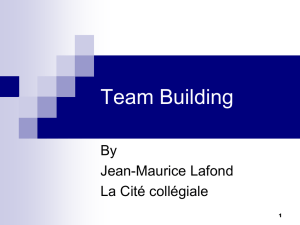PPT - National Neighborhood Indicators Partnership
advertisement
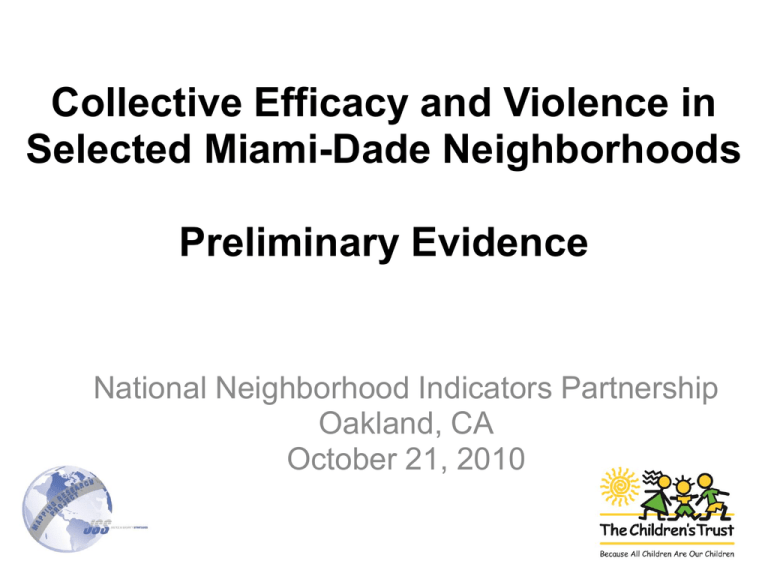
Collective Efficacy and Violence in Selected Miami-Dade Neighborhoods Preliminary Evidence National Neighborhood Indicators Partnership Oakland, CA October 21, 2010 Overview • Project Background and Expectations • Methodology • Study Areas • Initial (Curious) Findings • Next Steps Racial / Ethnic Segregation Miami-Dade County, Florida Project Background Neighborhood violence – youth homicides Multi-year research – JSS & The Trust Based on theory of collective efficacy Linkage of mutual trust and willingness to intervene for common good without necessity of strong personal ties Address gaps in social disorg/capital theories Build on multi-year Project on Human Development (Chicago) Miami-Dade County Homicides 2004-2008 Project Expectations Shed new light on youth violence Establish baseline with spatial analysis Test theory of collective efficacy Provide information for resource targeting Provide analytic support to foster solutions and guide violence prevention work Study Methodology Three components: Socio-economic risk factors for crime collected and mapped Violent hotspots mapped using income and data on homicides and 911 calls re aggravated assaults, robberies Collective efficacy measured by direct observations and door-to-door surveys Miami-Dade County Violence Hotspot Analysis Miami-Dade County Violence Hotspot Index Study Area – Bunche Park Visual Assessments and Documentation - CPTED Study Area – Liberty City Initial Findings – Survey Measures • Social Cohesion (11 items): degree of connectedness to neighborhoods and each other – “good area to raise children” and “people here are generally friendly” • Social Control (6 items): likelihood neighbors would get involved when government fails to meet its obligations – likelihood of neighbor doing something if “a large pothole on street needed repair” or “city planned to cut funding to your community center” • Intervene (12 items): extent neighbors would intervene to help solve neighborhood problems – likelihood of neighbor intervening if “someone was trying to break into a house” or “suspicious people hanging around the street” or “people having a loud argument in street” • Collective Efficacy (29): integrates all prior items into a unified scale representing all 3 dimensions Initial Findings: Survey Respondents Initial Findings • Across both communities, Liberty City reported these variables were significantly higher levels significantly related to of: collective efficacy: – social cohesion • Directly: – social control – Education level – collective efficacy – Satisfaction with as well as lower: police services – fear of crime – Homeownership – perceived • Inversely: incivilities – Perceived incivilities than Bunche Park in neighborhood Next Steps Select six more neighborhoods with variety of characteristics to conduct and compare observations and surveys Integrate other data into the analysis, including violent crime and systematic social observations Determine where community groups and individuals have effects on crime Involve neighborhoods in future design / discussion to support work, contribute to positive change That's All for Now! Contact me with questions or ideas: Lisa Pittman, lisa@thechildrenstrust.org Thanks to JSS researchers: – Craig Uchida, cduchida@jssinc.org – Shellie Solomon, sesolomon@jssinc.org – Christine Connor, cconnor@jssinc.org – Corry Putt, cputt@jssinc.org


